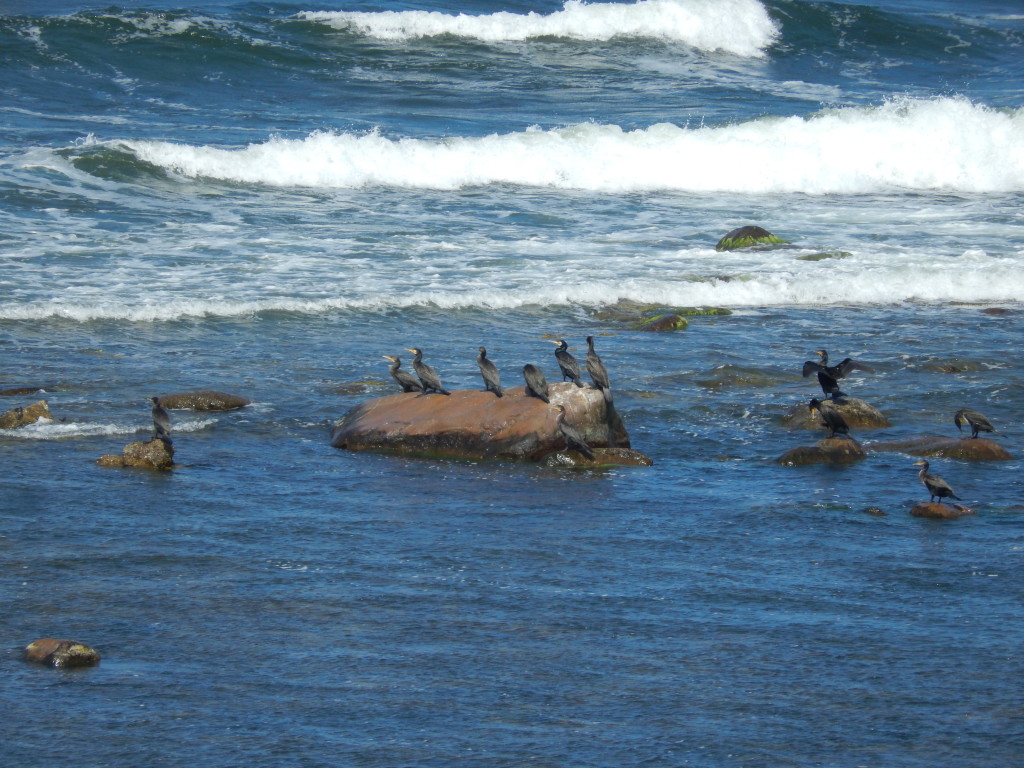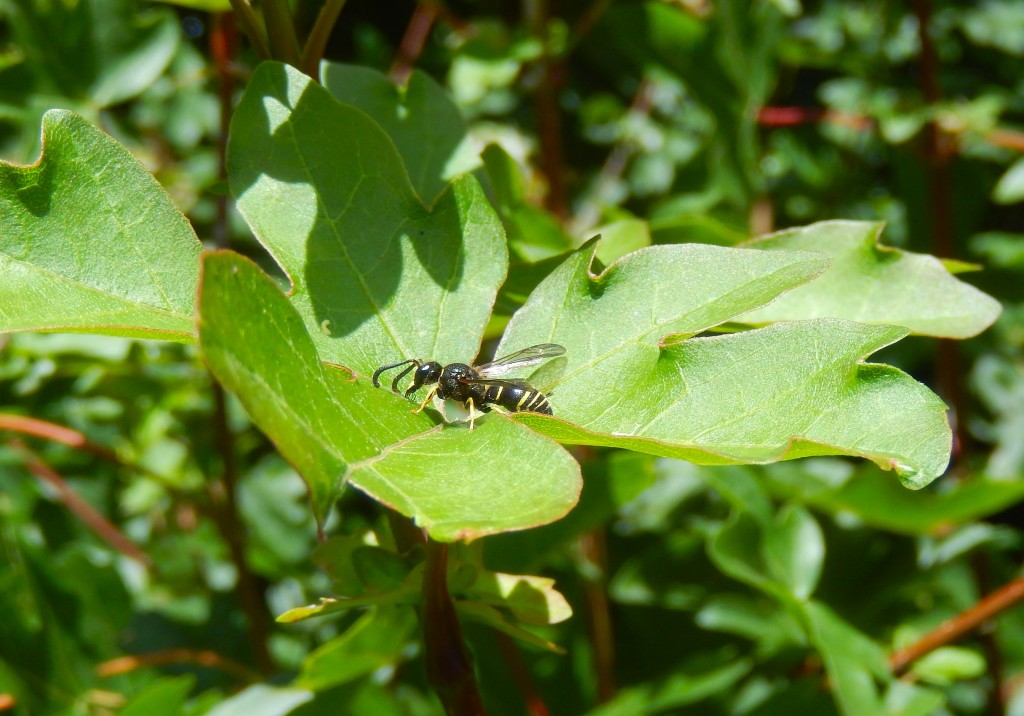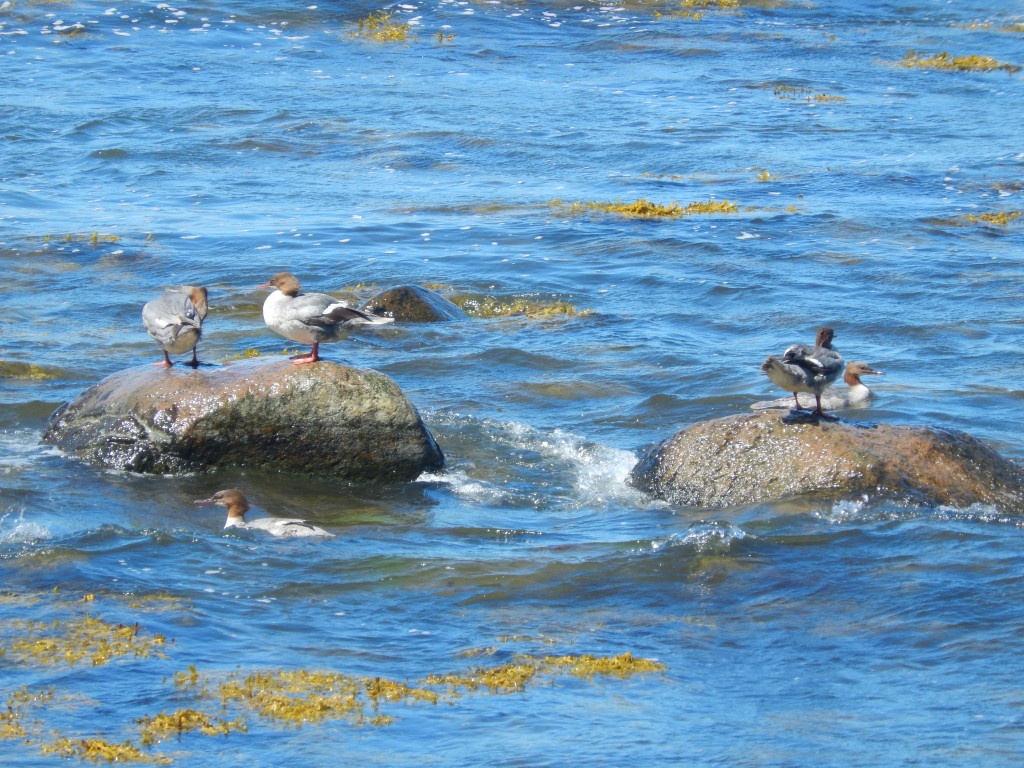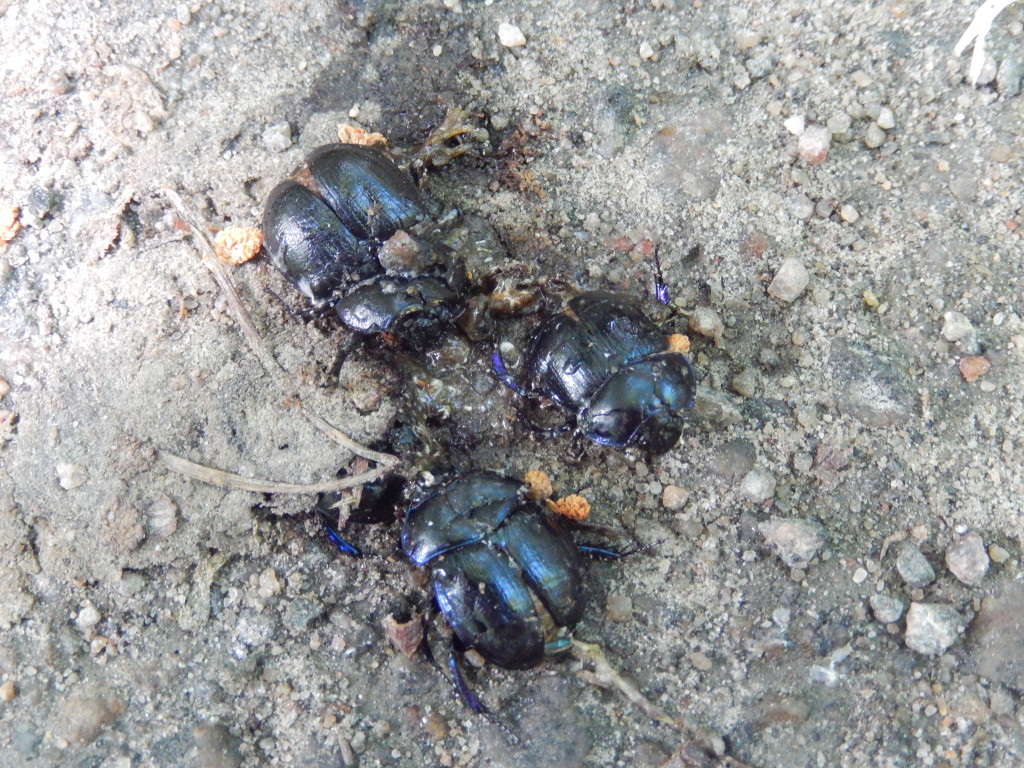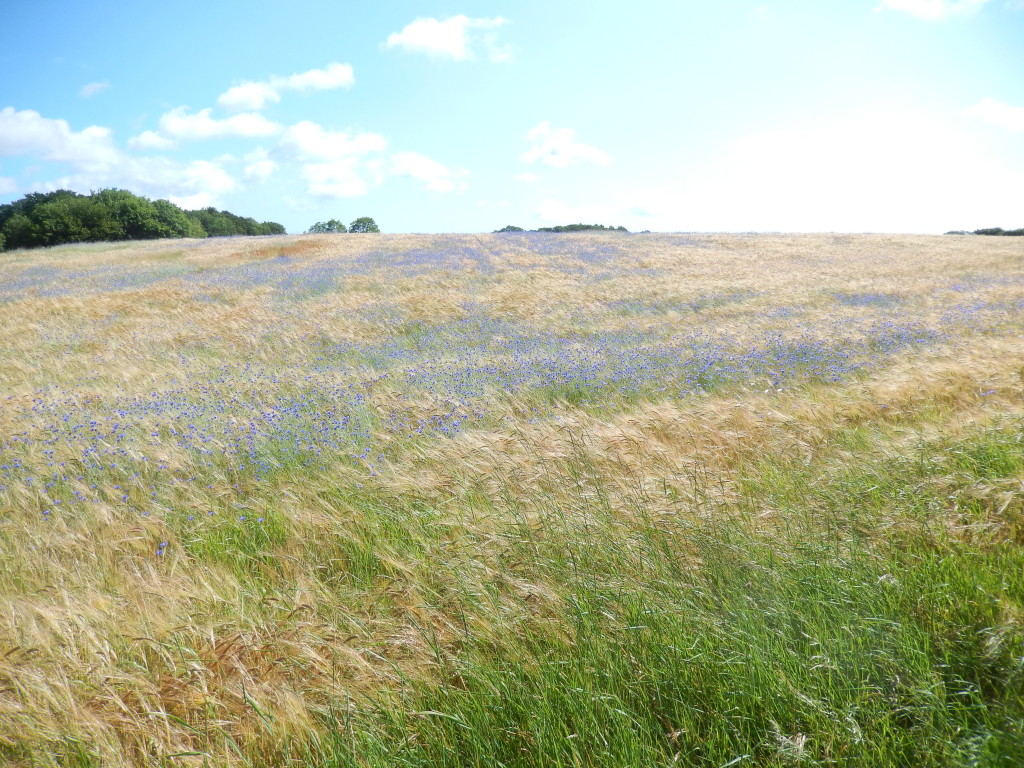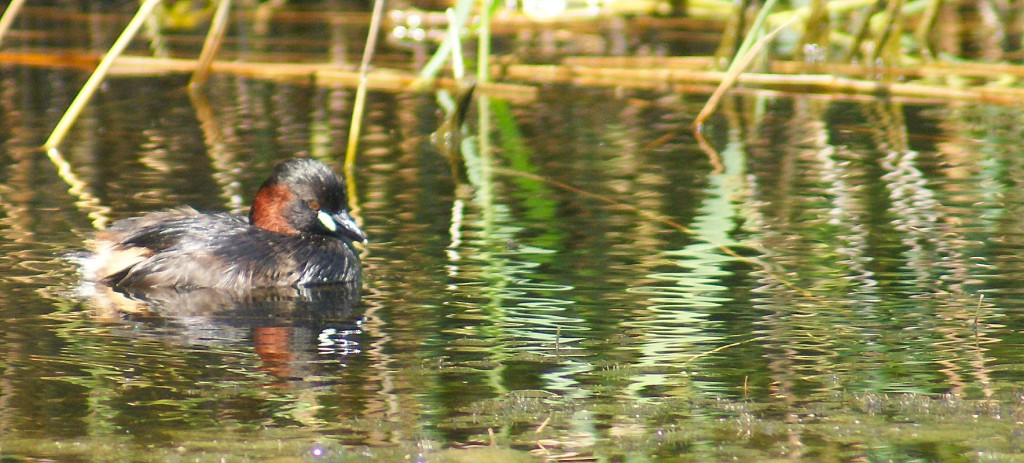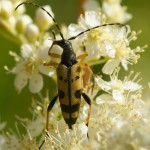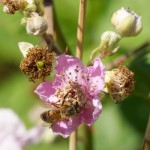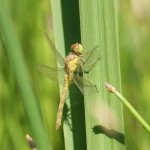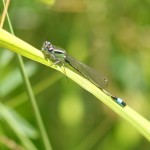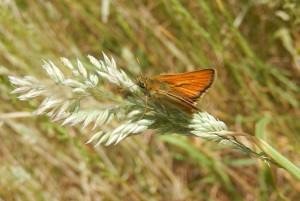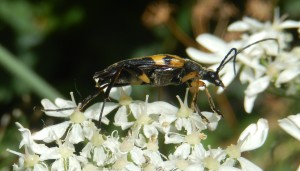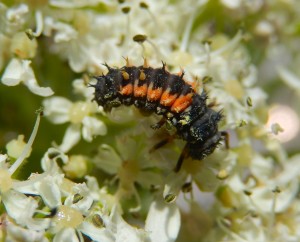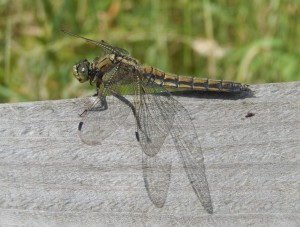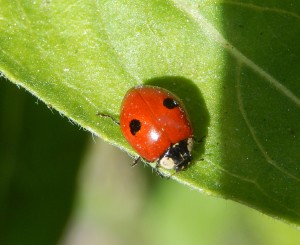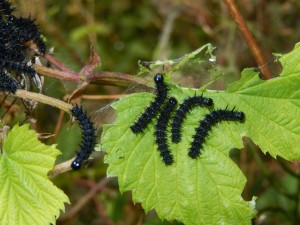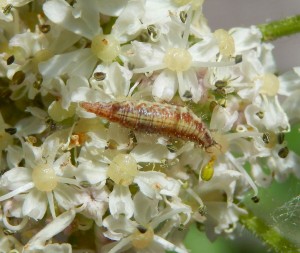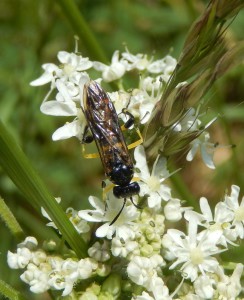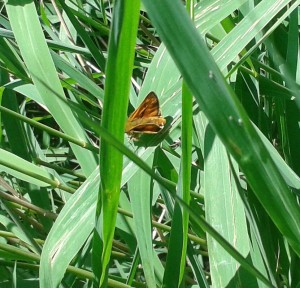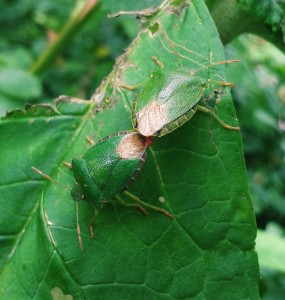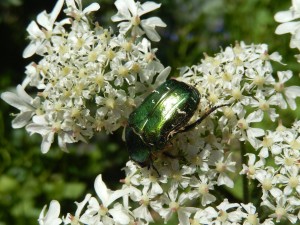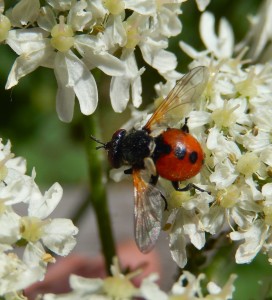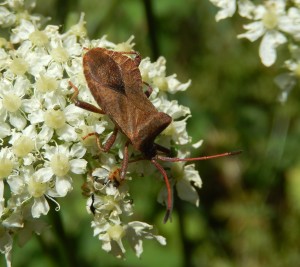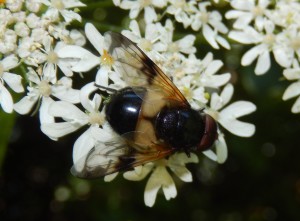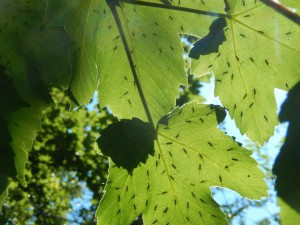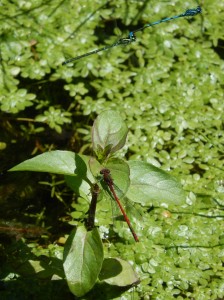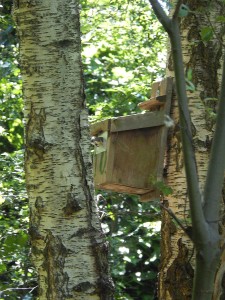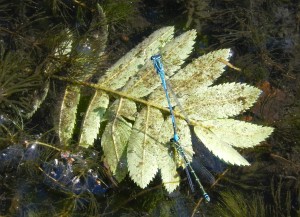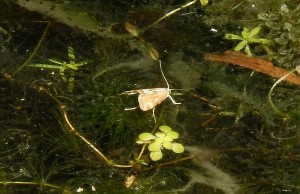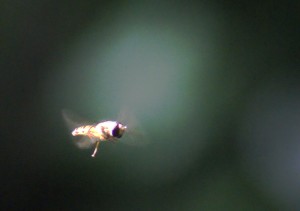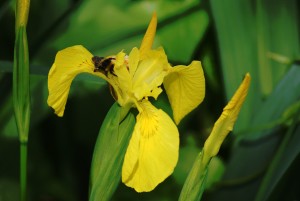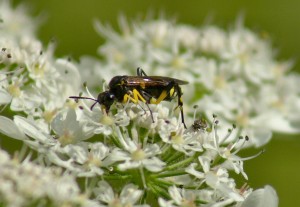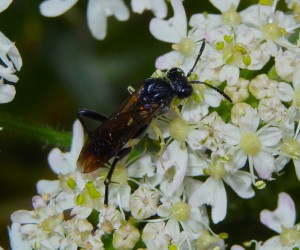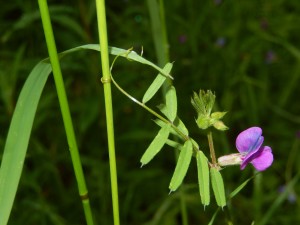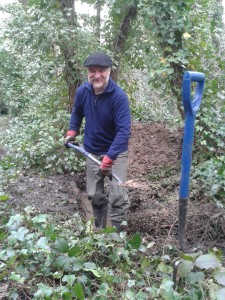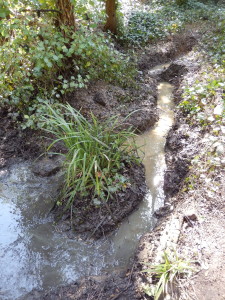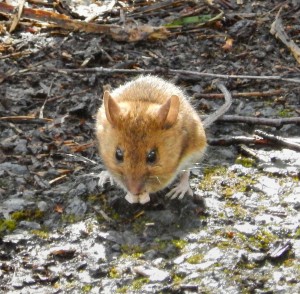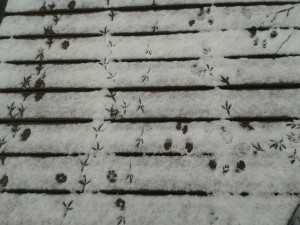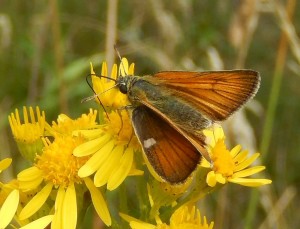
Well, what an exciting day in nature. In London, too. The meadows are now as dry as we’ve ever seen them; and they’re full of butterflies. The Small Skippers have flown; in their place are plenty of Essex Skippers, on an increasing amount of Ragwort.
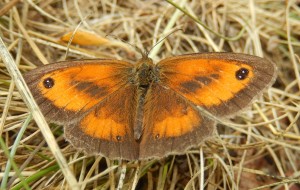
They are accompanied by clouds of Gatekeepers: we must have seen 100 of them, with 35 counted on one leg of the Butterfly Transect alone (going along to the beehive behind the Anthill Meadow). And good numbers of Meadow Browns (a dozen or so) and Small Whites; with twenty or thirty Holly Blues, they were high in the woods, visiting leaves, even on the ground.

A male Sparrowhawk perched on a dead branch above the pond boardwalk.
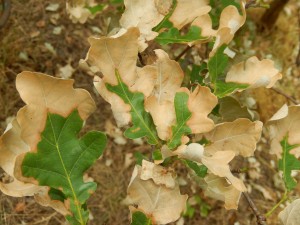
Signs of drought were everywhere: the pond is really low, but the brief rains of the last few days have brought levels back up a little. We spend a while giving 7 barrowloads of water to the planted birches on the embankment, and even rescued a few small oaks that were really suffering. The holm oaks, from the Mediterranean maquis, however looked perfectly comfortable: presumably with their waxy leaves and closed stomata, they are barely growing in the dry season.
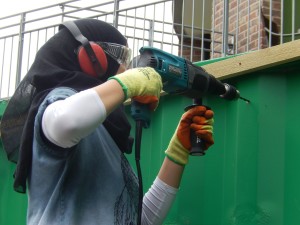
We fixed up a trellis on battens bolted to the extremely hard steel of the green hut; it took forever to pierce the metal, but after that it was easy to do up the bolts and screw the trellis to the battens.
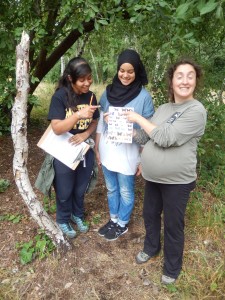
And yes, the butterfly transect was crowned by a confirmed sighting of an insect we’d felt sure must be here: a Purple Hairstreak. One sat on a low-hanging Oak leaf for us to check with binoculars and shaky camera. The streaked wings with their tiny tails could not be mistaken. The conservation officer was … visibly pleased. We also saw what seems to have been a Beautiful Carpet Moth – again, the photo was distant but we all saw it with binoculars.
It was hot and humid, and we worked quite hard, but it was a beautiful and memorable day.

